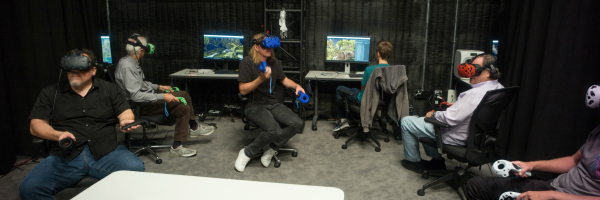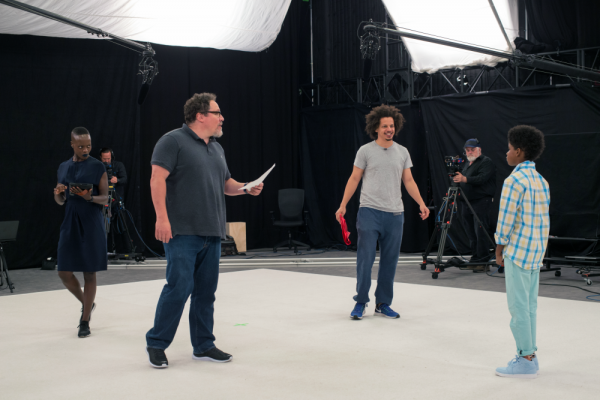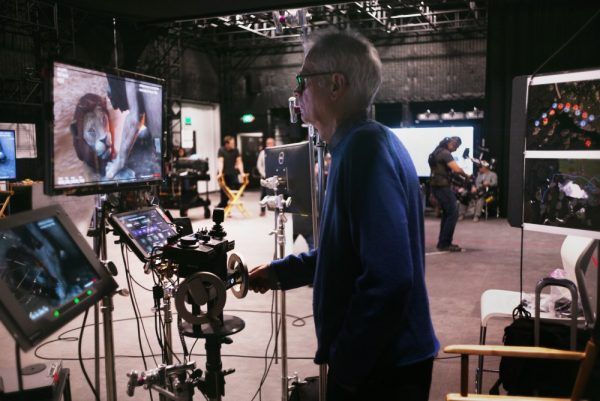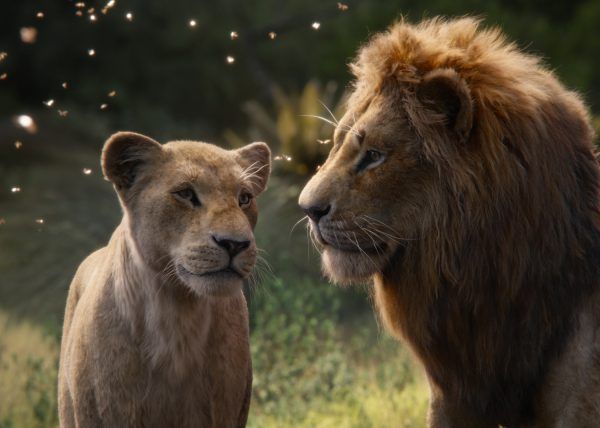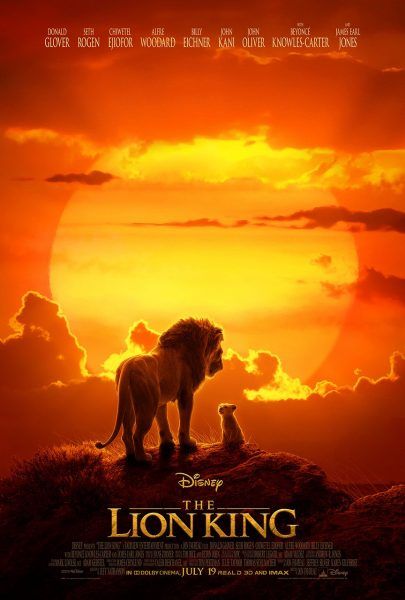I've been in this entertainment racket long enough to see some strange and incredible things on film and TV sets. I've walked through a "torture chamber," watched Pennywise have a friendly chat with the crew, and strolled through a few stunning full-scale spaceships over the years, but I can safely say I've never been on a set quite like The Lion King.
That's because it wasn't really a "set" at all, but a warehouse full of groundbreaking technology, where filmmaker Jon Favreau and his crew (many returning from their previous collaboration on The Jungle Book) once again pushed the boundaries of innovation on what it means to make a digital production. Far removed from the dazzling African landscapes being were crafting inside, The Lion King production set up shop in a nondescript Southern California warehouse, where Disney invested in a multi-million renovation for a space where about 90% of the film was created through every step of the process, from design and story to filming and post-production.
Way back in 2017 (it talks a long time to make a digital picture like The Lion King,) I visited the production headquarters with a small group of journalists, where we had the chance to speak with Favreau and his team and get a first-hand look at their unusual creative process and the innovative tech that allowed them to make the film. Walking through the maze of hallways, offices and workspaces, you wouldn't find any of the animals, environments, or rows of trailers you might expect to find on a tradition movie set, but a team of about 150 crewmembers surrounded by computers, VR equipment, and screen after screen displaying the different renderings and various scenes at work.
The "stage," as it were, was much the same; a techie's dream space, where Favreau and his team used the gaming software Unity to build the sets in virtual reality. You might be standing square in the middle of a wire-strewn warehouse in Playa Vista, but strap on one of their headsets and you're not only transported into the world of The Lion King, you have the ability to build that world around you. Don't like how that tree looks in the scene? Drop and drag it. Want to see what your set-up looks like from a birds-eye-view? You're just a point and click away from whatever perspective you chose.
And that's just the start. Their digital technology gave them control over lighting, lenses, even placing digital dolly tracks that paired with a real-life rig in the studio -- all the standard elements of filmmaking, but digitized and endlessly flexible. For cinematographer Caleb Deschanel, that meant he had control over real-life cameras, connected to the VR screens, that allowed him to shoot on the stage and see the results in virtual scenes, while also allowing him to tinker with lighting obstacles in ways he couldn't on real-world sets.
"I have to say that lighting is much more than lighting," he explained. "It's finding the skies and lots of times, if you have trees in a frame they'll create shadows you don't want. So sometimes we'll lob off the tops of trees that you don't see the tops of and we put in our own
calculous to create the shadows that we want. You just keep inventing new ways of getting what you want." While Deschanel found himself facing new challenges in the form of computer glitches, he also had the opportunity to re-build the world to make the best-looking scene. Where else can you move a mountain when it's mucking up your shot?
However, if they took liberties with the details of the environment in the frame, they were also keen to map out a realistic world in a way that the animated classic notably didn't. The team was aiming for a documentary-style approach to the material (the animals talk and sing, but they're photo-real and generally much less anthropomorphized than their hand-drawn equivalents,) which meant they set out to construct reliable geography for their fantasy-land.
Production designer James Chinlund took a two-week scouting trip to Kenya to prepare for designing the environments and crafted his design by starting from Pride Rock and moving out. "My ambition was to build a world that was entirely cohesive so that at any given moment the audience is gonna feel like they know where they are," he explained. "They’re in true geography that when you’re at Rafiki’s tree you can see Pride Rock in the distance."
For Chinlund, one of the biggest challenges was designing the iconic Elephant Graveyard, which proved difficult to translate in the documentary style. "To imagine delivering that in a documentary style," he said. "That’s an example of a world where if we literally provided these huge bones and all this stuff like in the same volume that it was in the animated film I think you’d be pulled out." However, it turns out he went a little too conservative on his early designs. When he showed it to his daughter, she said it needed more bones. so of course, he added them. “She’s the boss,” Chindllund said.
And the technology invented for The Lion King isn't some one-off experiment either. In the months since I visited the set, I've seen VR tech popping up on more and more productions. They might not all be using it to create and film scenes in real-time, but VR has become a popular means of modeling and staging before filming. That's only the beginning of how this kind of technology could revolutionize the industry. As VFX Supervisor Rob Legato detailed, the possibilities are endless.
"It’s really the idea that you could make anything using this technology, which could be with actors... you can make The Godfather again. You could make a David Lean movie again and not look like a Marvel movie you know extravaganza that you don’t believe it," he explained.
"CG has like a bad connotation when somebody talks about it because it’s like, 'well I don’t want my movie to look like CG,'" he continued, "It’s like, well if it doesn’t look like CG and you could create that and have the discipline to not make it perfect you could make any film realistically with the actors." And as Virtual Production Designer Ben Grossman pointed out, those possibilities only get more insane and infinite when you start factoring in what can be accomplished with AI and interactive characters.
“What filmmaking in the future can be like is not filmmaking or storytelling, but world-building," he explained. "You create a world where characters have personalities and they have motivations to do different things, and then essentially, you can throw them all out there like a simulation and then you can put real people in there and see what happens. And so as we start to design characters that are controlled by artificial intelligence or in pre-scripted narratives that we tell it, then you could start creating an experience for audiences that goes far beyond sitting in a movie theatre and watching a film."
Suffice it to say, it was one of the most surreal mind-bending set visits I've ever been on, and quite an unusual glance into what the future of filmmaking could look like.
For more on The Lion King, check out the links below.
- ‘The Lion King’: Jon Favreau and Cast Talk about Translating Performances to the Characters
- Jon Favreau Explains How His ‘The Lion King’ Remake Was Shot Like a Live-Action Movie
- Here Are All of Disney’s Upcoming Live-Action Remakes

